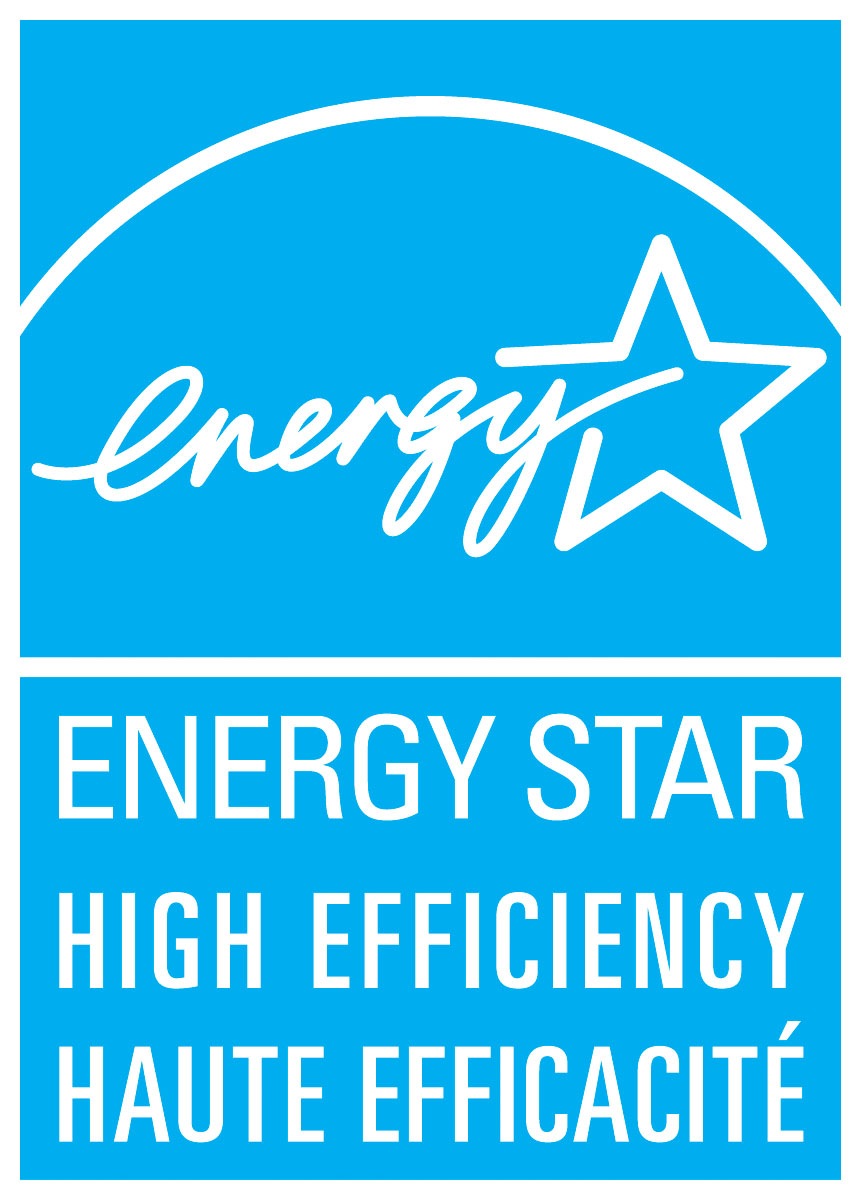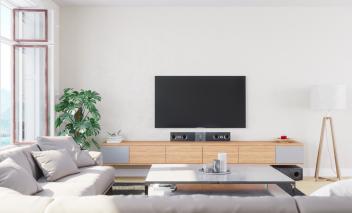From binge-watching a series to late night gaming marathons, today's televisions (TVs) are instrumental to our home entertainment. Any activity that increases screen time means increased energy use in the home, making it more important than ever to opt for energy-efficient products. An ENERGY STAR® certified TV uses 25% less energy, on average, than a standard model.

The ENERGY STAR symbol can be found on TVs with the latest "must-have" features, including:
- High dynamic range (HDR) for brighter highlights, a wider range of colors, and better contrast levels.
- Internet connectivity, also referred to as "Smart TVs" (for access to streaming video services like Netflix or Hulu).
- Ultra-high definition (UHD) resolution (also known as 4K), for crystal clear and life-like images.
Key features
- Save energy in all usage modes, including "sleep", "idle", and "on".
- Must consume 0.5 watts or less in "sleep" mode.
- Some models incorporate organic light emitting diodes (OLEDs), the latest in screen lighting technology that gives you superior contrast with great energy savings.
- Automatic brightness control (ABC) and dimming enhances the viewing experience and saves energy.
The ENERGY STAR Promise

All ENERGY STAR certified products are tested to meet strict efficiency specifications and are certified by an independent third party. They perform the same as or better than standard products without compromising performance in any way.
Start your research using the ENERGY STAR Product Finder tool to find and compare certified televisions. (NOTE: You will be redirected to the U.S. ENERGY STAR website.)
Helpful tips
- The brighter the picture, the more energy your TV uses. Use the minimum brightness level needed to enjoy your viewing.
- Buy the right size TV. Ideal viewing distance is 1.5 times the TV screen size. That means that a 100 cm screen (40 inches) is ideal for a viewing distance of 1.5 metres (about 5 feet). Generally, larger TVs use more electricity than smaller TVs.
- Purchase a TV that includes only features you will actually use and appreciate. Extra features such as network connectivity and 4K use more energy.
- Use an advanced power strip or "smart" power bar. Plug the TV into the master receptacle and plug other devices such as DVD players and video game systems into the slave receptacles. Turning off the TV cuts power to the other devices too, automatically saving energy and reducing your electricity costs.
Regulations set the energy efficiency minimum
Audio video products are subject to Canada's Energy Efficiency Regulations, which set a minimum performance standard for their energy efficiency. Find details in the Guide to the Regulations.
Related Blog Posts
Connect with us
Follow us on any of our social media channels for energy-efficient tips, rebates, giveaways and much more.
The ENERGY STAR name and symbol are trademarks registered in Canada by the United States Environmental Protection Agency and are administered and promoted by Natural Resources Canada.
.jpg)
